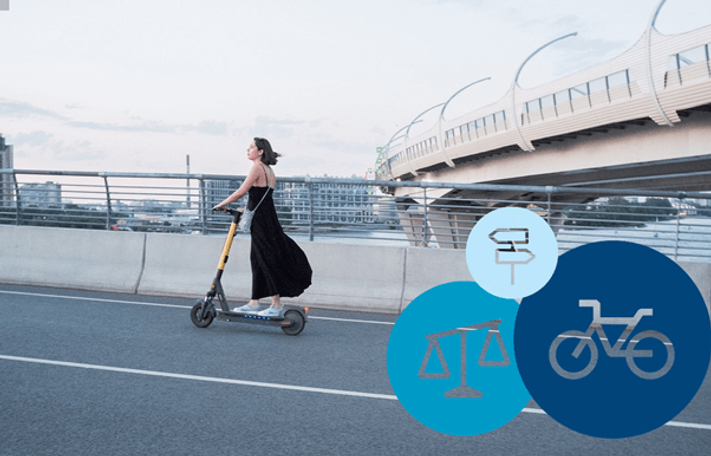
As we see a growing number of e-scooters and e-bikes on public roads, consumers may not be aware that their use on public roads is not always legal and ads should avoid implying it is. Roll up, roll up, for some tips for steering your ads into compliance, and on reflecting the law for these products.
It’s wheelie risky to depict privately owned e-scooters on public roads
It’s currently illegal to use privately-owned electric scooters on public land, such as on public roads and pavements, including in parks. There are exceptions for rental e-scooters in certain places, but these exceptions do not apply to privately owned e-scooters.
Private e-scooters can be used on private land, and so they may still be advertised to consumers. But consumers may not be aware that it’s illegal to ride them on public land, so it’s important to ensure that advertising for e-scooters intended for private ownership does not depict or encourage their use in public spaces.
In 2022, the ASA investigated an ad on YouTube that showed e-scooters being ridden in what appeared to be an urban park. Although on-screen text stated that the products could not be used on public land, the ASA considered that this did not counter the initial impression that they could be used in public parks. The ASA concluded the ad was misleading and socially irresponsible because it implied e-scooters could be used legally in public spaces (Currys Group Ltd).
Another ad for an e-scooter retailer stated “Are E-scooters illegal?” and “… it’s believed the police are taking a lenient view on e-scooter use unless they’re being used recklessly”. The ASA considered the ad was both misleading and irresponsible in suggesting the law around e-scooters was lenient and could be ignored, and that a change in law was imminent (E-Scooters 4 Less).
Marketers should take care depicting and communicating where and how e-scooters for private purchase can used, to avoid suggesting they can be ridden legally on public roads.
Avoid pedalling disinformation - legal classification of electric bikes is key
Under government guidance, e-bikes are usually classified as Electrically Assisted Pedal Cycles (EAPCs).
In 2023, the ASA upheld complaints for two ads featuring e-bikes which exceeded the requirements for classification as EAPCs and therefore should be licensed, taxed and insured in the same way as motor vehicles, or their use on public roads would be illegal. In both cases the ads showed the products being ridden on what appeared to be public roads. The ads were deemed misleading and irresponsible for not informing consumers about the products’ classification as motor vehicles, and the resulting legal obligations for owners (G-force, and Cyrusher Outdoors Sporting Ltd).
Establishing the legal classification of e-bikes is key, and ads showing them on public roads should include material information about any legal requirements that consumers will need to know in order to make an informed decision. Ads should also only depict e-bikes being used in public spaces legally, and fully in line with their legal classification.
Be careful to keep any ‘green’ claims clean too
Marketers might be keen to highlight the environmental benefits of using e-scooters and e-bikes in comparison to other transport options. But any such claims must comply with the rules on environmental claims; the basis of any environmental claims must be clear, and absolute claims will need to be supported with the highest level of evidence. Ads should not suggest an e-bike or e-scooter does not cause any environmental damage, if that is not the case over its entire lifecycle (TIER Operations Ltd).
If you need more advice on making claims about electric scooters or bikes, our Copy Advice team are on hand to provide free, bespoke advice for your non-broadcast ads.
More on
-
Keep up to date
Sign up to our rulings, newsletters and emargoed access for Press. Subscribe now.


